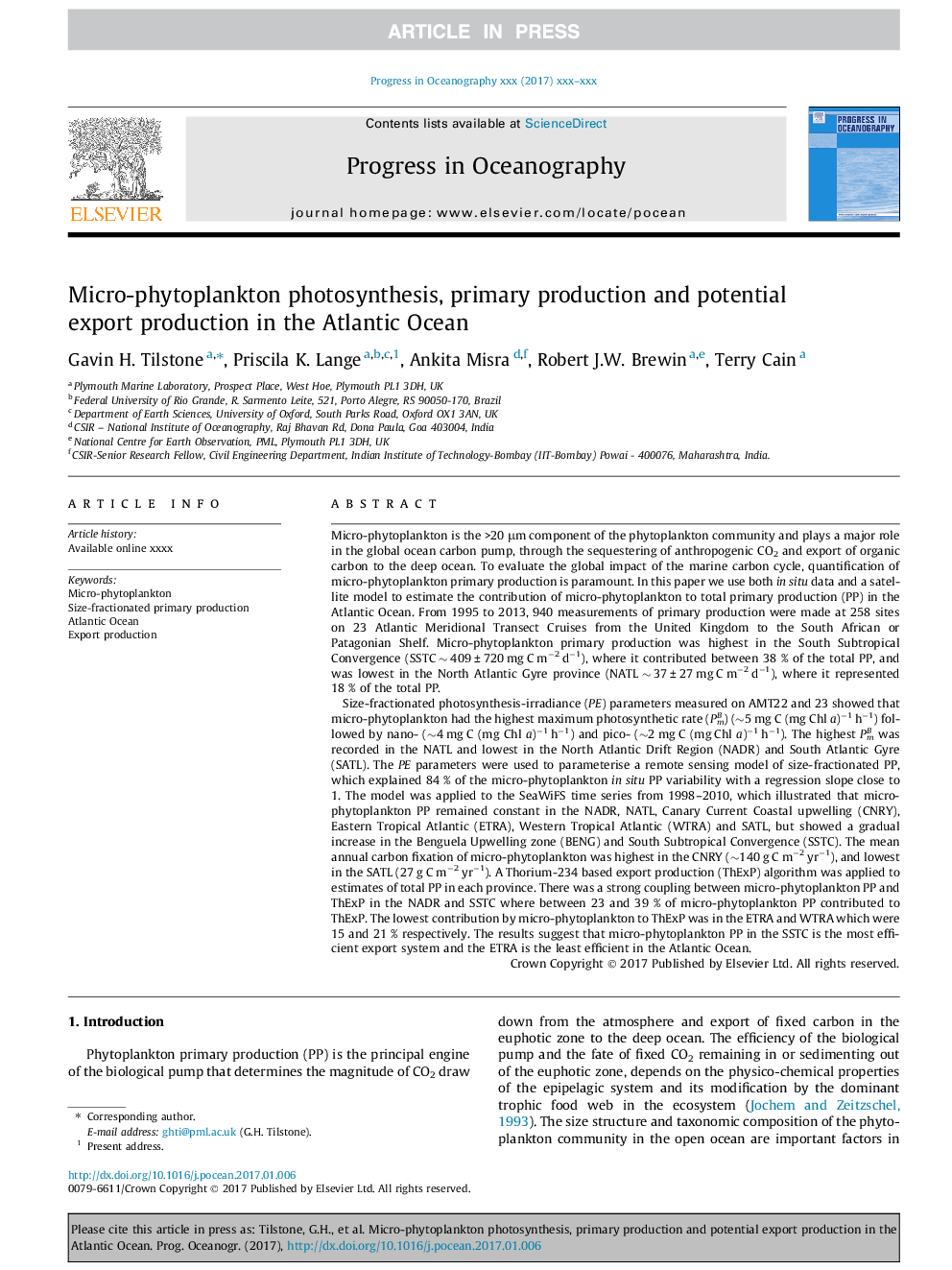| Article ID | Journal | Published Year | Pages | File Type |
|---|---|---|---|---|
| 8886779 | Progress in Oceanography | 2017 | 21 Pages |
Abstract
Size-fractionated photosynthesis-irradiance (PE) parameters measured on AMT22 and 23 showed that micro-phytoplankton had the highest maximum photosynthetic rate (PmB) (â¼5 mg C (mg Chl a)â1 hâ1) followed by nano- (â¼4 mg C (mg Chl a)â1 hâ1) and pico- (â¼2 mg C (mg Chl a)â1 hâ1). The highest PmB was recorded in the NATL and lowest in the North Atlantic Drift Region (NADR) and South Atlantic Gyre (SATL). The PE parameters were used to parameterise a remote sensing model of size-fractionated PP, which explained 84 % of the micro-phytoplankton in situ PP variability with a regression slope close to 1. The model was applied to the SeaWiFS time series from 1998-2010, which illustrated that micro-phytoplankton PP remained constant in the NADR, NATL, Canary Current Coastal upwelling (CNRY), Eastern Tropical Atlantic (ETRA), Western Tropical Atlantic (WTRA) and SATL, but showed a gradual increase in the Benguela Upwelling zone (BENG) and South Subtropical Convergence (SSTC). The mean annual carbon fixation of micro-phytoplankton was highest in the CNRY (â¼140 g C mâ2 yrâ1), and lowest in the SATL (27 g C mâ2 yrâ1). A Thorium-234 based export production (ThExP) algorithm was applied to estimates of total PP in each province. There was a strong coupling between micro-phytoplankton PP and ThExP in the NADR and SSTC where between 23 and 39 % of micro-phytoplankton PP contributed to ThExP. The lowest contribution by micro-phytoplankton to ThExP was in the ETRA and WTRA which were 15 and 21 % respectively. The results suggest that micro-phytoplankton PP in the SSTC is the most efficient export system and the ETRA is the least efficient in the Atlantic Ocean.
Keywords
Related Topics
Physical Sciences and Engineering
Earth and Planetary Sciences
Geology
Authors
Gavin H. Tilstone, Priscila K. Lange, Ankita Misra, Robert J.W. Brewin, Terry Cain,
